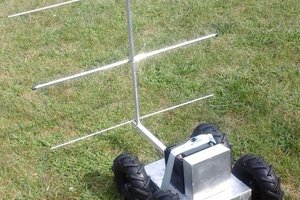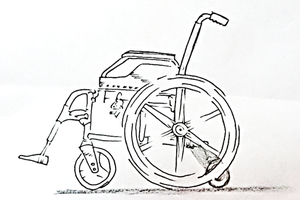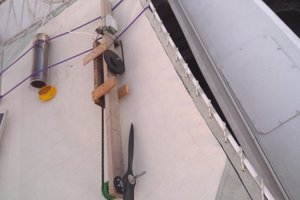Design Concept
The ARLISS Extreme airframe is a high performance, two stage solid fuel sounding rocket using commercial off-the-shelf components. We are attempting to create the performance of government sounding rockets as amateurs. With a cost structure that is affordable for STEM science experiments.
We use a 4" diameter booster with a commercial N motor boosting a 3" sustainer using a commercial long burn M motor. The sustainer will generally reach above Mach 3 during burn.
We expect to consistently reach ~ 120k' AGL with about ~21,600 nSec of solid fuel propellant - as of early 2017 we are flying an AeroTech N3300 (14,041 nsec) motor in the booster and an AeroTech M685 (7,561 nec) motor in the sustainer. Total burn time is ~15.5 seconds.
We expect, like in ARLISS Classic, to recover and reuse the airframes making the cost of access to the troposphere the cost of propellant.
The insight that has informed our work is drag. Drag roughly increases with the square of cross section and the square of velocity. So small rockets, traveling less fast will waste less energy in friction heating and use more for altitude. So to achieve maximum altitude, we need to minimize drag. The ARLISS Extreme system has proven to be very efficient - flying 30-50% higher than alternative hobby rocket systems on the same amount of propellant.
it appears that the cost of .3kg, 1.5p PocketQube payload to 40 km is about $750.
Of course, enough velocity is required for stability in a fin-guided airframe. And enough size is required to carry a science payload of interesting size for interesting experiments
The compromise we have arrived at is to use a two stage rocket with a 4" diameter booster and a 3" diameter sustainer, with long burn motors.

The 3" sustainer has substantially lower drag than a 4" airframe, accommodates a substantial motor and can take two 1.5p PocketQubes as science payload. The 4" sustainer can deliver sufficient power with commercial 4" solid fuel motors.
Modest improvements to the airframe would allow about a 50% increase in power using existing off-the-shelf motors.
Flight Profile
Payload
Airframe
Avionics
Launch System
 Ken Biba
Ken Biba
 Roddy "Rags" Read
Roddy "Rags" Read
 Glenn Powers
Glenn Powers
 rsramyasatish3
rsramyasatish3
 sean d'epagnier
sean d'epagnier